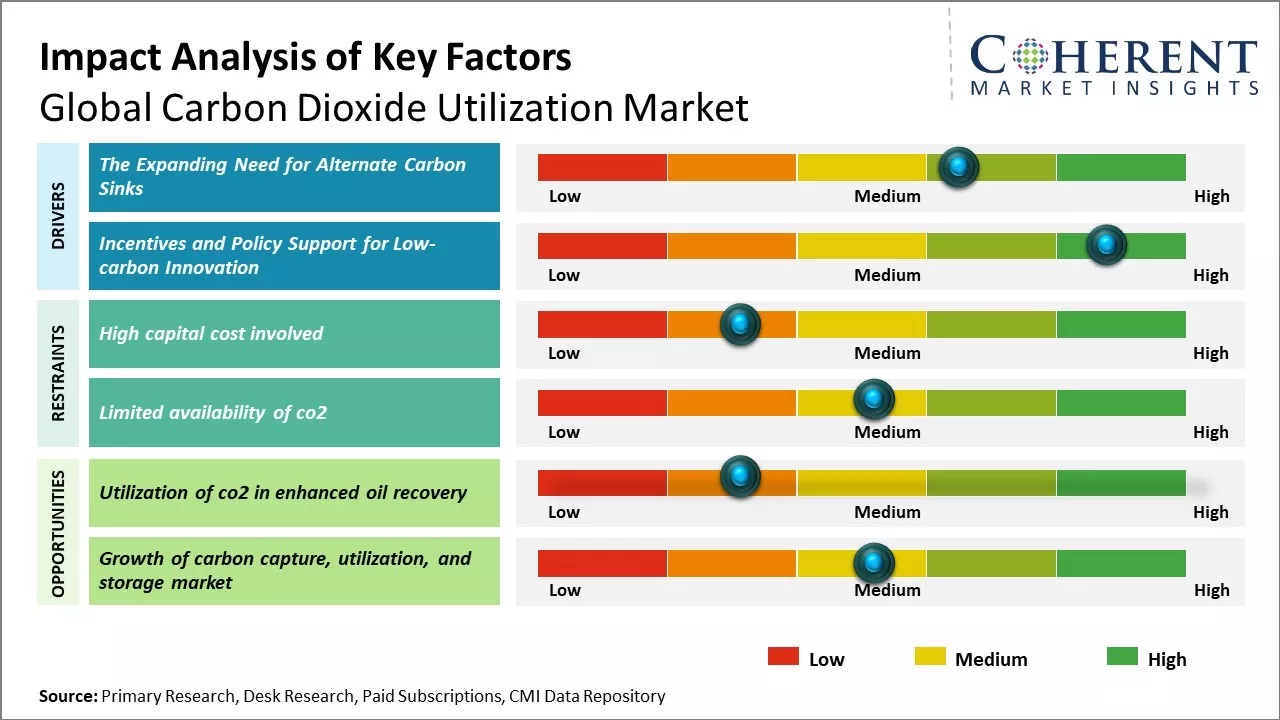Global carbon dioxide utilization market is estimated to be valued at USD 5.88 Bn in 2025 and is expected to reach USD 14.38 Bn by 2032, exhibiting a compound annual growth rate (CAGR) of 13.6% from 2025 to 2032.

To learn more about this report, Request sample copy
Global carbon dioxide utilization market growth can be attributed to increasing efforts globally to reduce emissions and find sustainable alternatives, thus, making carbon dioxide utilization an important part of the solution. Increasing support through regulatory policies and investments in research & development activities can boost demand. Furthermore, growing adoption of carbon dioxide in various end-use industries such as oil & gas, food & beverages, and construction is expected to drive the market growth during the forecast period.
Expanding Need for Alternate Carbon Sinks
The growing climate change concerns across the globe are driving need for alternative solutions to reduce rising carbon dioxide levels in the atmosphere. One such approach gaining prominence is carbon dioxide utilization which aims to enable productive use of CO2 instead of releasing it into the air. The basic idea is to utilize CO2 as a carbon feedstock or raw material in various industrial processes and everyday products. Some of the major application areas where carbon dioxide utilization is being applied include production of fuels like methanol, synthetic gas, construction materials like cement and concrete, plastic and polymer manufacturing, food and beverage sector. Carbon dioxide can act as an inexpensive carbon source and replacing fossil fuels in these areas can significantly help decarbonize many industries. For example, carbon capture technologies coupled with utilization of the captured CO2 is enabling production of building materials like concrete with reduced clinker content but with same or improved durability and strength. The concept of carbon dioxide removal from ambient air through direct air capture technologies and subsequent usage is also gaining ground. The Intergovernmental Panel on Climate Change’s recent report highlighted carbon dioxide removal including utilization as important to achieve climate neutrality by mid-century. The UN Environment Programme's Emissions Gap Report 2021 also stated that carbon dioxide removal volumes must increase over 100-fold by 2050 to limit warming to below 2°C. Growing policy focus on carbon neutrality targets and net-zero emissions goals across regions will require deploying a variety of carbon dioxide management options including usage of the captured carbon.
Joining thousands of companies around the world committed to making the Excellent Business Solutions.
View All Our Clients